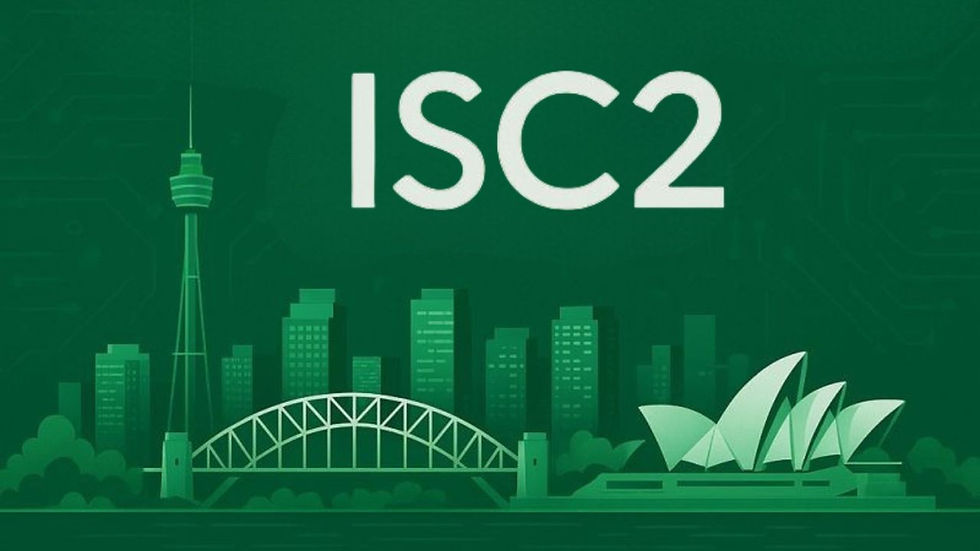Zero Trust and the Mindset Revolution in European Cybersecurity with Karim Allam
- Juan Allan
- Jul 29
- 5 min read
Karim Allam explores Zero Trust in Europe: Why mindset beats technology, how NIS2/GDPR drive adoption, and sectors transforming cyber resilience

While European organizations increasingly recognize Zero Trust as essential, Karim Allam, VP of Customer Success, argues that the biggest barrier isn't technical, it's cultural. His ground-level work reveals that legacy systems and vendor sprawl matter less than the human mindset.
As finance and manufacturing sectors lead adoption, his evidence shows that companies prioritizing cultural alignment achieve 50% faster breach response and seamless UX. Here, Allam dissects how Europe turns regulatory pressure into cyber resilience by marrying technology with human vigilance.
1. How are European organizations adopting the Zero Trust security model, and what are the main barriers to its widespread implementation across different industries?
In my opinion, Zero Trust adoption across Europe is steadily increasing, but the pace varies by country and industry. Based on my work on the ground, I observe that organizations are no longer questioning "if" Zero Trust is needed, but rather "how" to implement it effectively.
However, implementation is not without its challenges. A 2024 Cybersecurity Ventures report highlights that while 70% of European enterprises have outlined Zero Trust strategies, fewer than 20% have achieved full implementation. This gap is primarily due to:
Legacy infrastructure that resists integration with modern security models.
Cultural resistance, particularly in industries with deeply rooted IT practices.
A shortage of specialized skills in identity management, segmentation, and continuous monitoring.
Vendor sprawl, making it difficult for decision-makers to align tools with strategy.
At its core, Zero Trust is not about buying a product but about adopting a mindset. We must recognize that the human element—the so-called weakest link—can become our first line of defense when this mindset is embedded throughout the organization.
2. Given the increasing number of cyberattacks in Europe, how is the regulatory landscape (GDPR, NIS Directive, etc.) evolving to support the adoption of advanced cybersecurity models like Zero Trust?
From my perspective, the evolving regulatory landscape in Europe is a major driver for Zero Trust adoption. Regulations such as the GDPR and the revised NIS2 Directive are pushing organizations toward proactive, risk-based approaches to security. NIS2, in particular, expands the scope of regulated sectors and introduces stricter cybersecurity requirements, aligning closely with core Zero Trust principles like continuous monitoring and least privilege access.
According to the European Union Agency for Cybersecurity (ENISA) 2024 threat landscape report, regulatory pressure is now the number one driver of Zero Trust-related investments across critical sectors. Frameworks such as NIS2 and DORA are not just compliance checkboxes—they are blueprints for transformation. They drive investment in visibility, control, and identity governance—key pillars of Zero Trust.
More importantly, these regulations emphasize the importance of a culture of security. Without the right mindset at all levels of the organization, even the best technology stack cannot deliver real resilience.
3. What specific challenges do European companies face in balancing the need for stringent cybersecurity measures with the demand for seamless user experience and operational efficiency?
Balancing security and usability is one of the most complex issues I see among my clients. On one hand, the threat landscape necessitates robust controls; on the other, users expect a frictionless experience. This tension is especially acute in industrial and critical infrastructure environments, where system availability is paramount.
The ISACA State of Cybersecurity 2024 report notes that 39% of European companies list user experience disruption as the top concern when deploying Zero Trust. Meanwhile, 56% in manufacturing and OT environments cite integration with legacy systems as a significant challenge.
To bridge this gap, organizations must invest in adaptive authentication, role-based access controls, and network segmentation that operates quietly in the background.
This is why mindset matters: when users understand their role in security, they support seamless implementation instead of resisting it. Zero Trust done right enhances both security and productivity—but it requires thoughtful design and cultural alignment.
4. In terms of growth, which sectors within Europe (e.g., finance, healthcare, manufacturing) are most actively investing in Zero Trust architectures, and why?
From what I see on the ground, the financial sector is leading Zero Trust adoption, followed closely by healthcare and manufacturing. The primary drivers are regulatory pressure, risk exposure, and digital transformation.
For instance, the Digital Operational Resilience Act (DORA) and PSD2 in finance, as well as NIS2 in healthcare and critical infrastructure, have accelerated investment in identity governance, network segmentation, and access control.
The IBM Cost of a Data Breach Report 2024 highlights that finance and healthcare experienced the highest breach costs in Europe—both exceeding $5 million per incident. This reality is forcing those industries to act decisively.
In manufacturing and OT sectors, a report by Xage Security in early 2024 found that 72% of industrial organizations in Europe have adopted or plan to adopt Zero Trust models. This marks a major cultural shift in traditionally conservative industries.
Again, the underlying success factor is not just architecture—it’s awareness. When employees and leadership embrace the Zero Trust mindset, adoption accelerates naturally.
5. How are European cybersecurity companies and service providers adapting to the rising demand for Zero Trust solutions, and what are some innovative approaches they are taking to differentiate themselves in a competitive market?
European cybersecurity providers are no longer just selling tools; they are becoming strategic advisors. At Diverse GmbH, for example, we offer managed GRC and Zero Trust services built around open-source platforms , tailored to NIS2 and GDPR requirements.
Innovative firms are differentiating by:
Offering modular, API-driven platforms with fast deployment cycles.
Integrating compliance reporting directly into Zero Trust dashboards.
Building managed Zero Trust-as-a-Service offerings for SMEs.
According to IDC Europe’s 2024 market intelligence report, 63% of European organizations prefer to work with partners who offer Zero Trust assessments and strategy planning—not just point solutions. The most successful providers focus on enabling the right mindset before implementing the right tools.
The consultative, education-first approach helps clients shift from reactive to proactive postures, turning what was once a “weakest link” into a resilient frontline defense.
6. As cyber threats continue to evolve, how are European governments and private enterprises collaborating to ensure that Zero Trust frameworks stay effective and scalable across large-scale, multinational organizations?
There is a growing recognition that cybersecurity cannot be tackled in silos. European governments and enterprises are collaborating more closely through initiatives like ENISA, national CERTs, and the European Cybersecurity Competence Centre (ECCC).
These bodies facilitate:
Threat intelligence sharing
Joint pilot programs for Zero Trust in critical sectors
Policy harmonization across borders, especially via NIS2 transposition
According to the European Parliament’s 2024 policy brief on cyber resilience, cross-border cooperation and private-public partnerships are the most effective ways to operationalize Zero Trust at scale.
Multinational enterprises are also leveraging federated identity models and cloud-native controls to unify Zero Trust across geographies. But again, the differentiator is not just technology. It’s the mindset—a shared understanding that trust must be earned and verified continuously.
In my experience, organizations that commit to this principle, both in governance and in culture, are far more successful in implementing Zero Trust at scale.



Comments